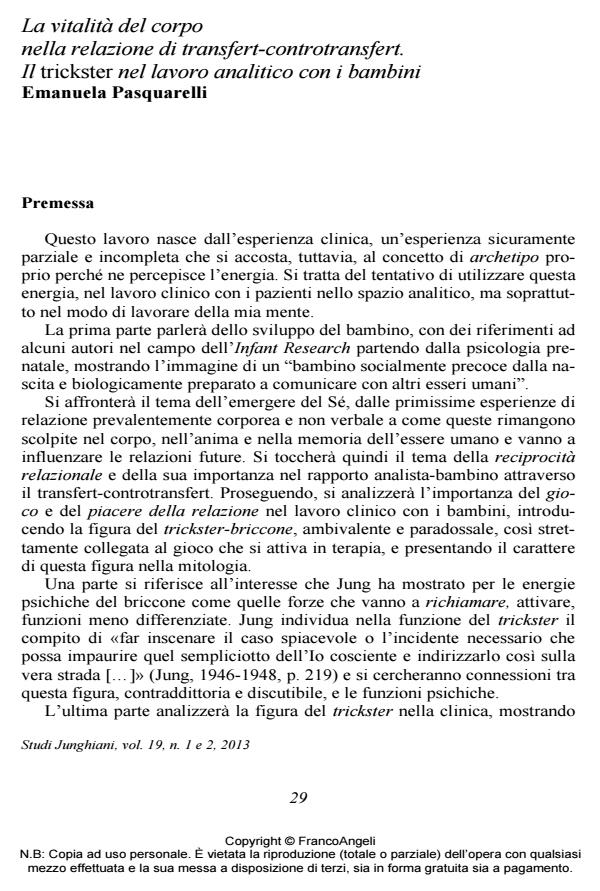The Vitality of the Body in the Transference-Countertransference Relationship. The Trickster in Analytic Work with Children
Journal title STUDI JUNGHIANI
Author/s Emanuela Pasquarelli
Publishing Year 2014 Issue 2013/37-38
Language Italian Pages 24 P. 29-52 File size 763 KB
DOI 10.3280/JUN2013-037003
DOI is like a bar code for intellectual property: to have more infomation
click here
Below, you can see the article first page
If you want to buy this article in PDF format, you can do it, following the instructions to buy download credits

FrancoAngeli is member of Publishers International Linking Association, Inc (PILA), a not-for-profit association which run the CrossRef service enabling links to and from online scholarly content.
The article aims to examine the importance of the body in the analytic space in the transference- countertransference relationship. Starting from the prenatal, following the trend of infant research to reach neurosciences, it shows the importance of reciprocity in the relationship and of an affective emotional communication. In clinical work with children, the analyst is often working beyond a verbal space, in contact with feelings and sensations that the mind is not able to contain and there slip into the body. The trickster-rascal as a "psychical archetypal instance" plunges powerfully into clinic, forcing the analyst to a constant internal work of connection and communication between the ego and the unconscious.
Keywords: Trickster, transference-countertransference, relational reciprocity
Emanuela Pasquarelli, La vitalità del corpo nella relazione di transfert-controtransfert. Il trickster nel lavoro analitico con i bambini in "STUDI JUNGHIANI" 37-38/2013, pp 29-52, DOI: 10.3280/JUN2013-037003